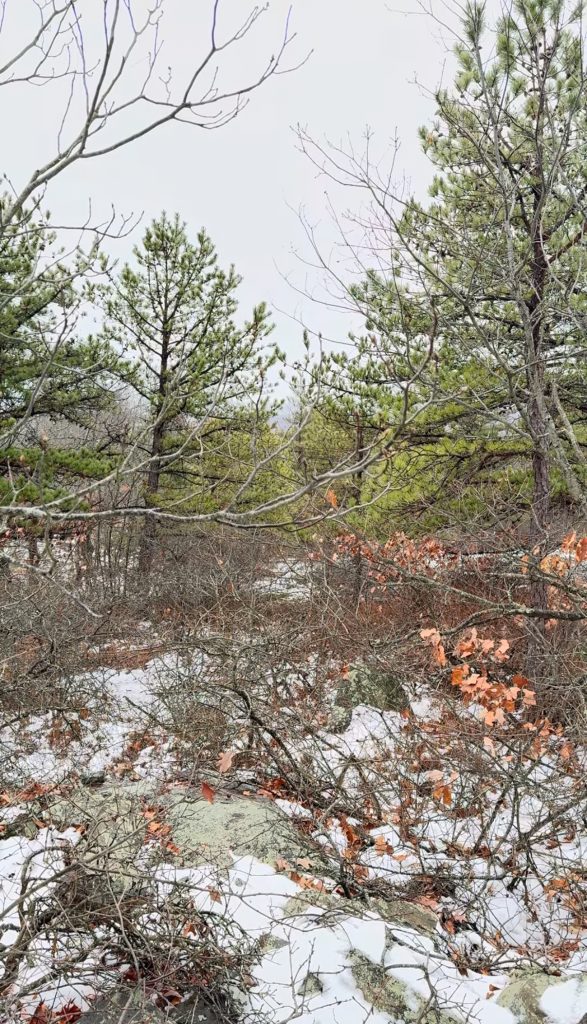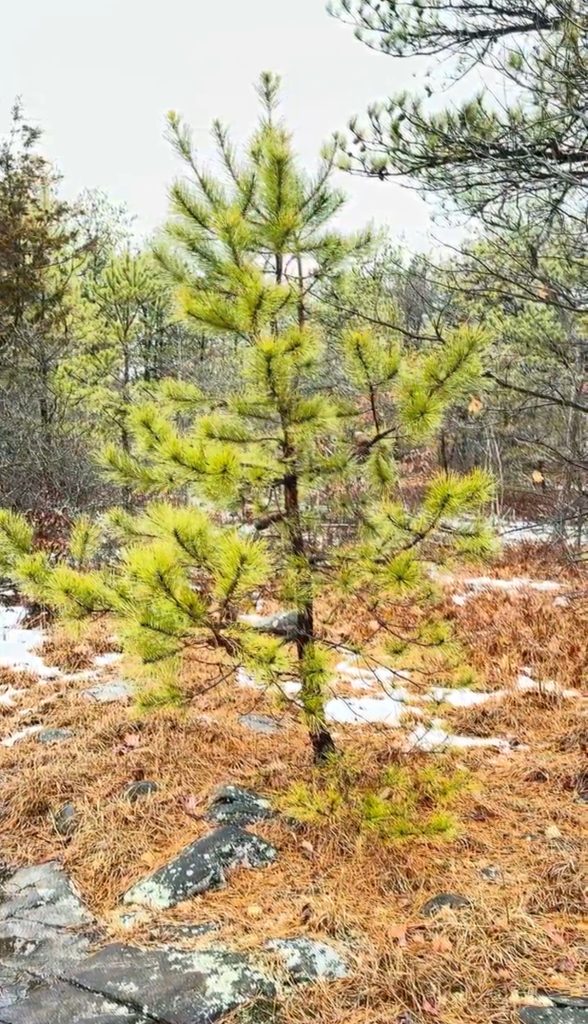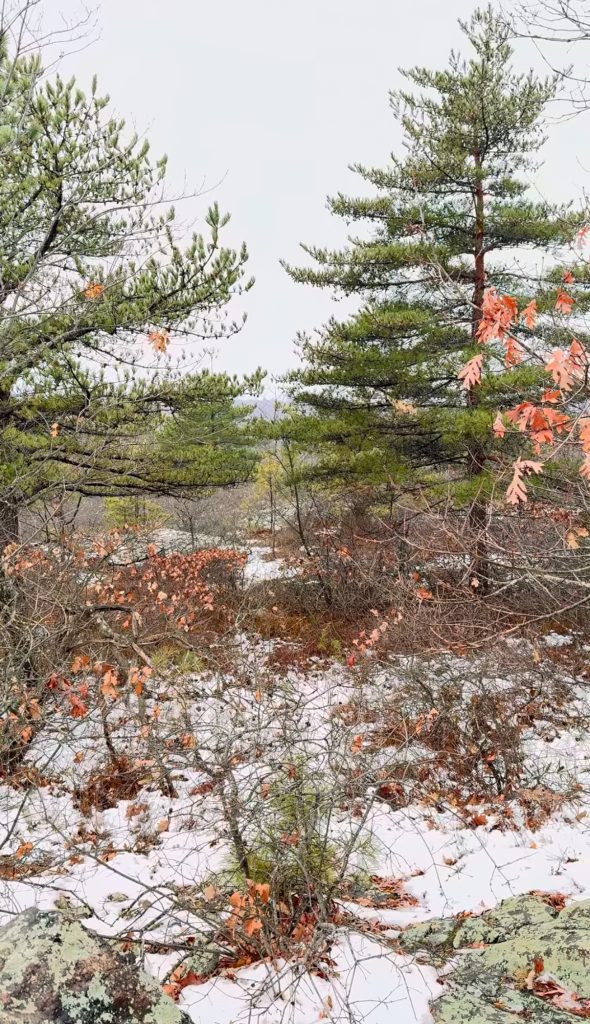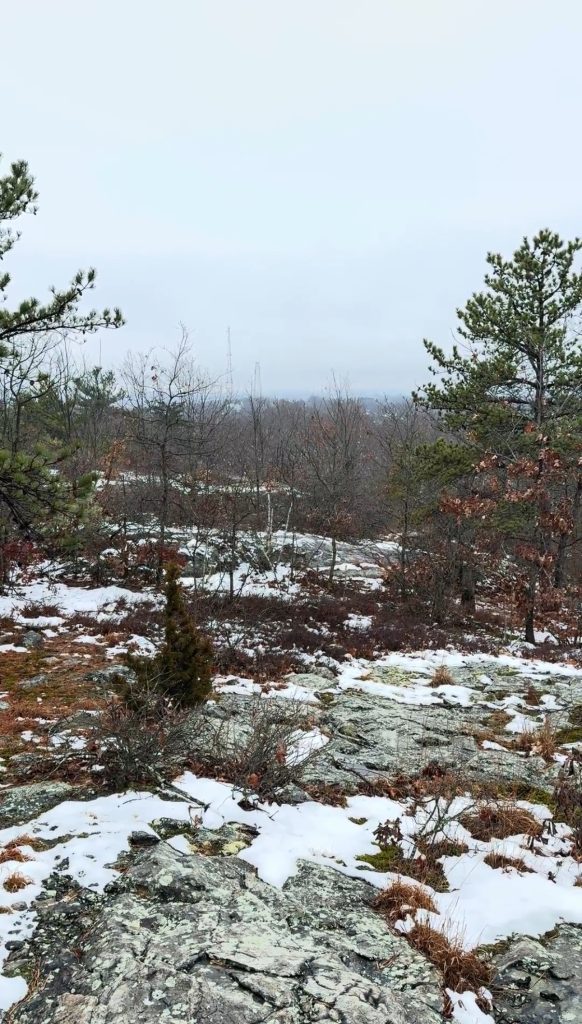
A Surprise Stand of Pitch Pine in Middlesex Fells Reservation
Around the Boston Metro and extending into many areas of New England, the most dominant, and well known, pine tree is the White Pine. In fact, the White Pine is the state tree of Maine, is featured on top of the Massachusetts State House in the form of a pine cone statue, and was one of the most historically significant early exports in the region after colonization. So ubiquitous is the zeitgeist of the White Pine, that many New England residents know nothing of the other pines that thrive on their home turf. Explore enough local parks though, and you may be lucky enough to discover the rugged Pitch Pine.

I first encountered a stand of Pitch Pine up in Acadia National Park in Maine. It is the dominant species atop the summit of Kebo Mountain, the shortest summit in the park. I did not initially realize that the stand is just one of many spots in New England where you can encounter a forest dominated, or codominated by Pitch Pine. In fact, this stand of Pitch Pine is actually at the very northern terminus of the Pitch Pine’s native range, and it is much more common down in southern New England and into the Southern Appalachians. It also forms the canopy of the famous New Jersey Pine Barrens, which is an ecological anomaly on the northern east coast in its shear scale of pine growth.

Upon reading a bit about the Pitch Pine, I learned that it often thrives in areas with poor soil conditions and rugged terrain, but is quickly outcompeted by many hardwood species and White Pine in other areas. It can sometimes thrive in young forests but will slowly disappear from the canopy as the stand matures, similar to other early successional species such as the white birch. This is why it’s usually a bit of a scavenger hunt to find Pitch Pine here. Because of its relative scarcity, I was later surprised to discover small summits dominated by Pitch Pine at Middlesex Fells to the north of Boston! The area is riddled with rocky surfaces, likely composed of Roxbury Puddingstone Conglomerate rocks, which are exposed at summits over generations as soil slowly erodes away around them. Only the tough little Pitch Pines, along with occasional shrubby oaks, seem to tolerate the remaining conditions.

In the Middlesex Fells, you can find Pitch Pine surrounding the old MIT Geodetic Observatory, and around Boojum Rock, both of which are marked on Google Maps. The route to the observatory, however, is very poorly marked in many areas, so you might find yourself bushwhacking a little if you attempt to reach it. It is quite an incredible transition to ascend from the forests of oak, hemlock, beech, birch, and maple in the rest of the Fells to a forest stand that looks like something out of a dry California climate. The environment at Middlesex Fells is also somewhat comparable to the nearby Prospect Hill in Waltham, which features many Pitch Pines around the summit, and showcases a similar transition from the base to the top.

These summit stands contrast strongly to areas where Pitch Pines can actually grow to their full potential. On summits, they tend to remain small and scraggly, perhaps more likely to die off and get replaced via weather events and loss of nutrients. If you want to see Pitch Pines at their largest near Boston, your best bet is to travel to the MetroWest region and explore the Desert Natural Area that spans the towns of Marlborough and Sudbury. This area is naturally very sandy, and the soil conditions cater to the growth of Pitch Pines and scrub oaks. The Pitch Pines here will reach heights closer to what we would typically see in White Pines. However, be on a close look out for Red Pines, which are not native to the spot but were heavily planted in previous decades. You can usually easily tell the two species apart by their bark, as Pitch Pine looks a bit more rugged with deeper fissures, while Red Pine has a more paper-like look.
